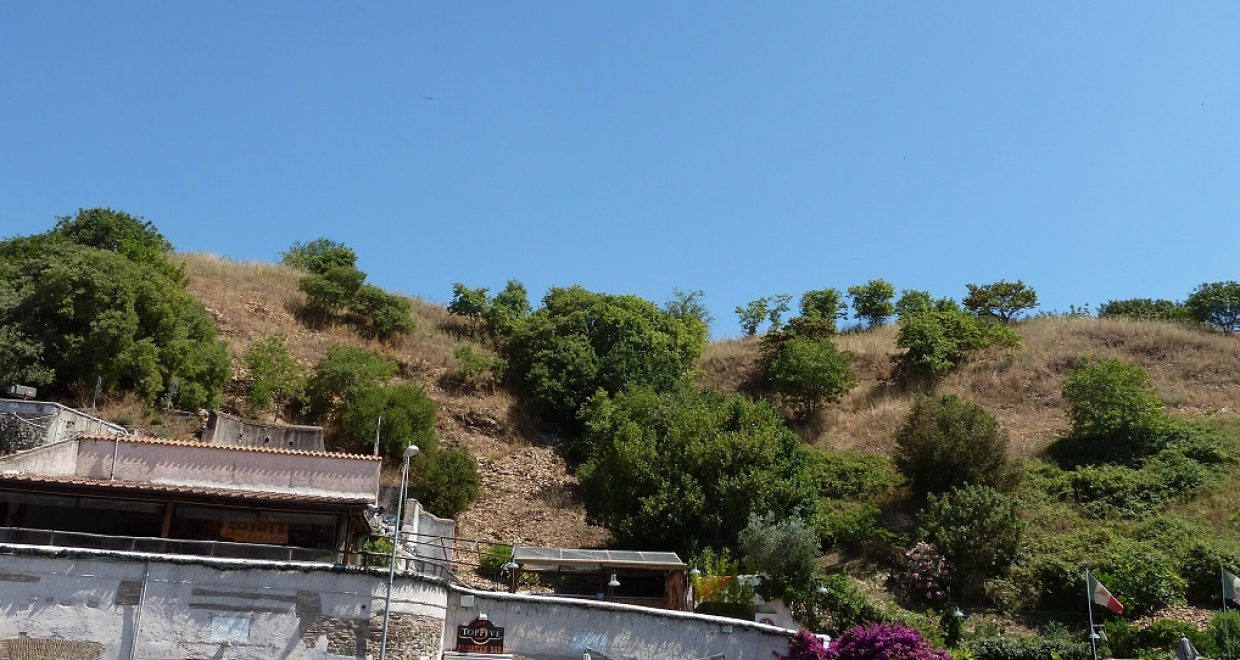Unearthing past perceptions of Monte Testaccio
Lucy Donkin, Lecturer in History and History of Art at the University of Bristol, discusses her forthcoming article, ‘Mons manufactus: Rome’s man-made mountains between history and natural history’, in Papers of the British School at Rome (2017), which will shortly be published via FirstView on Cambridge Core.
When describing the process of historical research, phrases such as ‘unearthing evidence’ or ‘sifting through material’ come readily to mind. In such archaeological analogies earth is essentially something to be removed and discarded in order to bring to light the remains of crafted objects or built structures. So it is curious to reflect on research that involves reading texts precisely in search of references to soil.
Monte Testaccio in Rome is a case-in-point. Formed from the remains of many thousands of amphorae shipped to the city in antiquity, this large mound has been the focus of sustained archaeological investigation. However, in thinking about the site, I’ve concentrated less on the amphorae and more on the soil in between. In doing so, I’ve been following a medieval and early modern perception that the mound was made up of earth brought from all over the Roman world as symbolic tribute.
This view co-existed with others that understood the pots to have contained monetary tribute, or to be rejects from local potteries. As a man-made mound, Monte Testaccio occupied a place between Rome’s hills and its built antiquities. Made up of soil or already broken pots and lacking a clear original form, it didn’t attract the sort of reflections prompted by the city’s ruins. Instead, the belief that it contained imported material meant that the site was used to characterise relations between Rome and the wider world in antiquity, and to draw comparisons with those in the present.
I had expected to find the site discussed only in descriptions of the city, so I was intrigued to discover that it was also mentioned in other contexts. These include religious texts that equated Rome with Babylon. One writer hostile to the Roman Catholic Church used the idea of the earthen tribute to contrast the renunciation of the ancient Romans with what they saw as the greed of the Papacy. Another used the idea of the monetary tribute to characterise the city as enduringly avaricious. Monte Testaccio was also invoked in medieval and early modern geology, both as an example of a man-made mountain and in debates over montane fossils. The potsherds were reminiscent of fossilised shells, whose presence in mountains far from the sea raised questions about their origins and transportation.
The mound’s material qualities were key in provoking this wider interest. But it is also emblematic of the connections between cultures of knowledge in this period, and the pivotal role played in these by Rome and Roman antiquity. Ranging from eschatology to earth sciences, these fields of enquiry transcend modern academic specialisation. Certainly, I’ve found that tracing the reception of Monte Testaccio has taken me into unfamiliar areas in terms of period, topic and even discipline. The resulting article can only touch partially on these areas, but I hope that it might start conversations with those whose work normally focuses on them. In terms of my own research, it is part of a wider attempt to understand the past connotations of earth and its role in the portability of place.
The role of soil in the reception of Monte Testaccio isn’t simply a one-off misapprehension inspired by an unusual monument. Earth was – and is – an important medium through which to connect locations symbolically, and Rome is rich in examples of this phenomenon. Traditions regarding Monte Testaccio were informed by earlier legends surrounding the Mausoleum of Augustus. Moreover, several religious sites claimed soil from Jerusalem: S. Croce in Gerusalemme, the Lateran, and the burial ground known as the Campo Santo Teutonico next to the Vatican. And in their turn, places elsewhere in the Latin West possessed, or claimed to possess, soil from Rome. So I’m trying to piece together what these collectively tell us about the city’s relationship with other locations.
Ideas for projects come together slowly and from different directions. This one has developed out of previous research on the creation and decoration of holy ground, and on earthen relics of sacred places. More informally, it reflects a growing interest in the symbolic use of soil in modern societies as well. Last but not least, it wouldn’t have taken shape without time living and working in Rome some years ago, including a scholarship at the BSR.
Sign up for content alerts to know when Lucy’s article is online.






